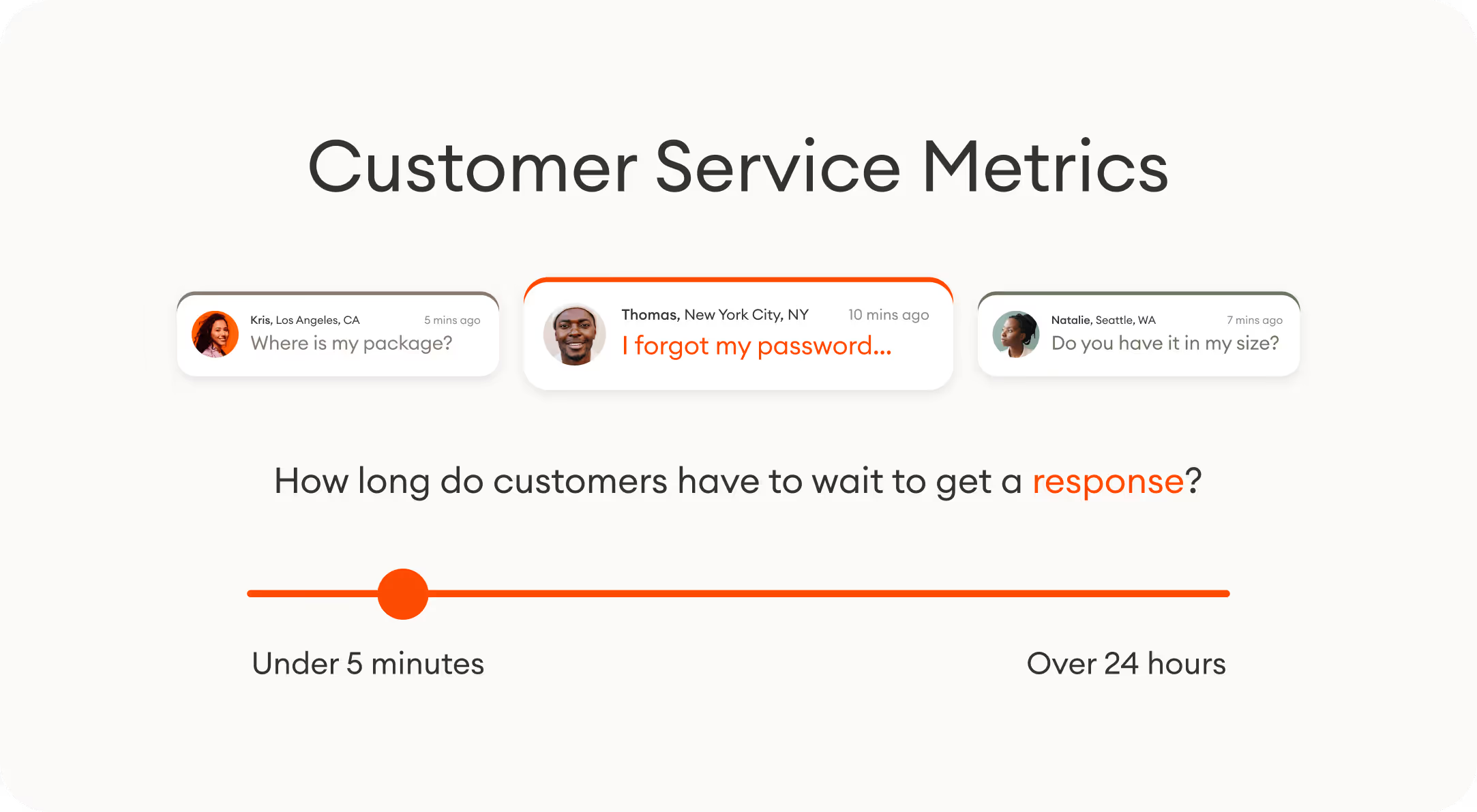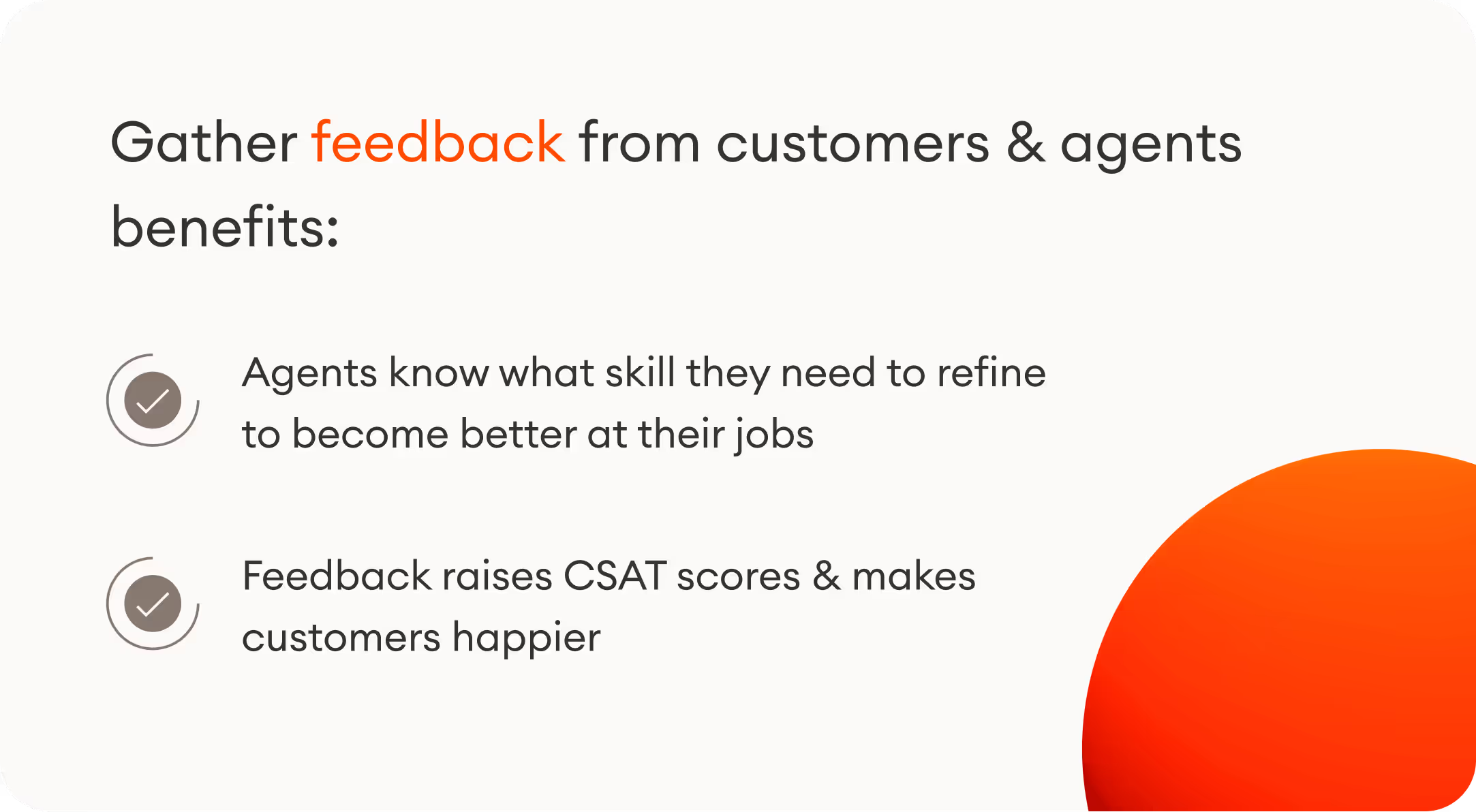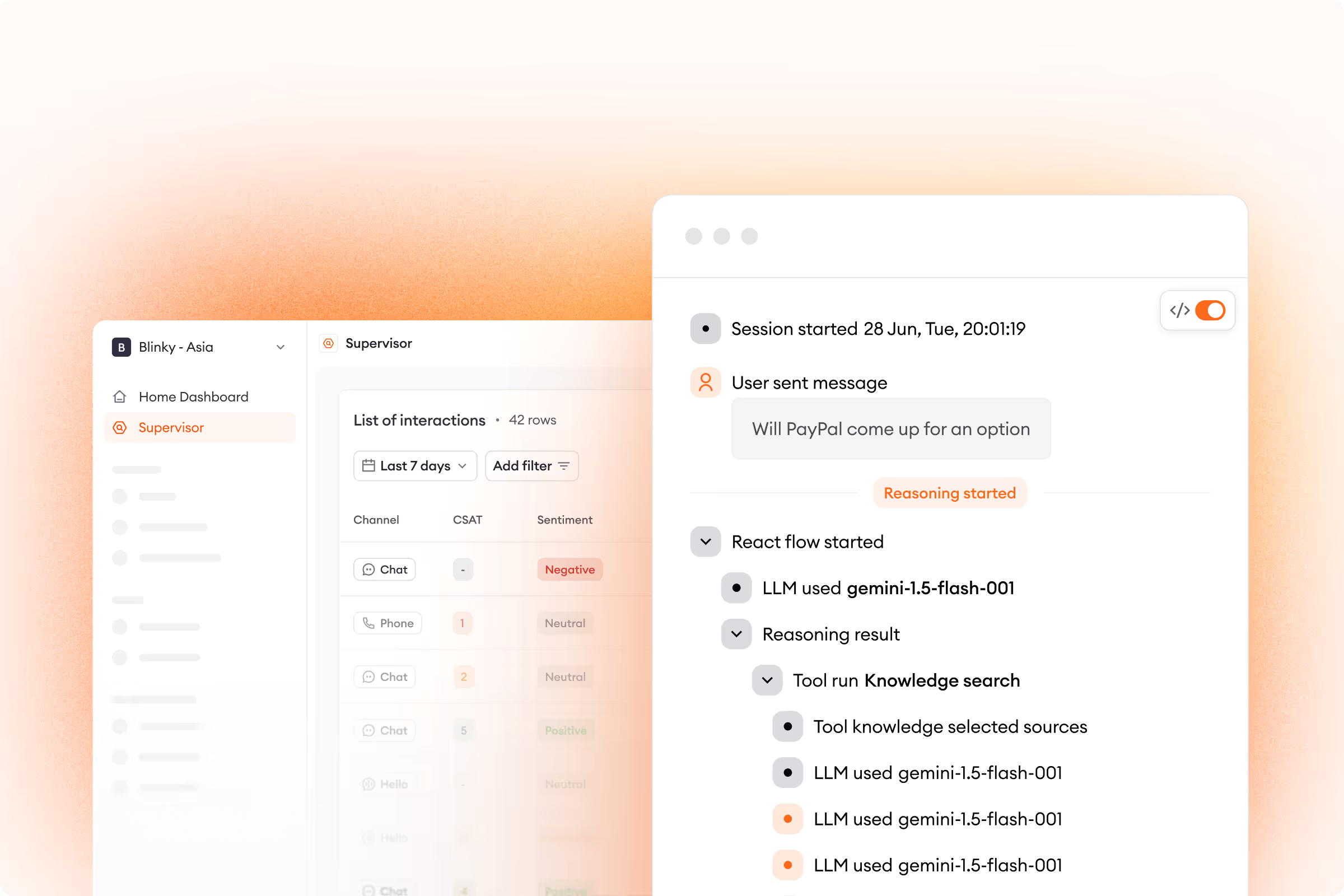When you look out at your customer support team, is it mostly empty desks staring back? If you’re like most companies, you’re probably dealing with an employee shortage.
Coined the Great Resignation, the US has recently seen an unusually large turnover rate in its workforce.
While no profession has been immune, the field of customer service has seen some of the worst numbers across all job functions, as support representatives are quitting in record numbers.
According to Salesforce, 71% of service agents considered quitting in the second half of 2021. Nearly that same share of representatives want to leave customer service altogether. Not to mention, half of customer service managers indicate their departments have seen a rise in resignations.
This trend is especially dangerous for customer service because churn among support agents has always been relatively high. Even before this movement, agent turnover rates fell between 30% and 45% worldwide. Most entry-level agents only last about a year.
What’s causing this mass exodus? The main factors prompting agents to leave are burnout and stress brought on by interactions with dissatisfied customers. Combine this with a dramatic spike in support ticket volume (home services saw a 92% jump!), and you can start to understand why agents are fleeing en masse.
This spells bad news for employers. Customer support turnover is a major cost for businesses, usually totaling 33% of a departing worker’s salary. Furthermore, losing good agents can negatively impact your brand as other employees and even customers may perceive problems within your company.
These numbers highlight how imperative it is for customer service leaders to optimize their agent experience immediately to keep their talented team of representatives.
Here are five tips for reducing your customer service turnover rates during the Great Resignation.
5 proven ways to reduce your customer service turnover rate
1. Automate repetitive tasks

If your agents are feeling overworked, the simplest (and most effective) step to take is to embrace automation tools that take care of mundane yet time-consuming work for you. Automation frees support representatives to focus on their well-being and work that they find more fulfilling.
Chatbots, for example, can answer 80% of standard customer questions.
In ecommerce, that means inquiries like “where’s my order” or “how much is shipping?” are instantly taken off of agents’ plates. Chatbots also reduce resolution times by 30%.
All in all, automation gives agents the best of both worlds: agents can enjoy more free time while simultaneously being more productive.
About 75% of support agents are at risk of burning out largely because they don’t have access to elementary automation tools. Something as straightforward as a chatbot can be a career-saving solution.
2. Invest in the agents you already have

One fatal mistake many customer support managers make is constantly hiring more support agents anytime there’s an increase in traffic. This approach is unsustainable and leads to several adverse consequences.
First, existing agents feel replaceable and see a lack of development opportunities.
Next, new agents are rushed through onboarding and can’t give customers a high standard of service. This does nothing but demotivate agents and frustrate customers and is likely why almost 20% of agents quit within the first 45 days.
Finally, customer service departments leak money when they go on hiring sprees. On average, training and onboarding a new support representative costs $4,000 per agent.
For the sake of your agents, customers, and bottom line, don’t do the easy thing and look to hire first. It won’t work.
Instead, stay lean and invest in the team you’ve already built. Your agents will feel like they’re part of a team that has their back, not some group that’s constantly seeing members come and go.
Once again, automation is an excellent first step here. For chat, industry-leading tools can deliver automation and deflection rates high enough that hiring pressures disappear entirely.
Since AI is predicted to power 95% of customer interactions by 2025, agents working with AI solutions will also have a first-hand look at the future of customer service, opening the door to several development opportunities.
Learn how Zowie helped ecommerce bike producer Kross grow sales and delight customers without having to hire new support agents in our case study, Kross Turns Chat Automation into Valuable Team Member.
3. Empower your agents with proactive roles

Agents often cite an inability to stand out within their organization or excel in their role as their motivation for resigning. In other words, support staff feel like they don’t have any agency at work.
Customer service leaders can do a number of things to empower employees so they see work as something valuable and not just another chore.
First, let agents deliver each customer personalized service. Steer clear of micro-managing.
Instead, encourage creativity and let agents use their own problem-solving skills to handle cases. Give them the flexibility to offer discounts, refunds, or rewards as they see fit. Steps like these will deepen customer relationships and build trust.
Second, agents can play an active role in generating revenue. How?
If agents aren’t bogged down by repetitive questions, they’re free offer product recommendations to customers who’ve shown a clear intent to buy. By answering product-related questions and assisting customers at checkout, support agents can fulfill a powerful sales function.
At Amazon, for example, product recommendations bring in 35% of their total revenue. By converting support into sales, organizations give agents a more influential role, having a net positive effect on the agent experience.
4. Track metrics to preemptively spot pain points

Many organizations are unaware of any problems concerning their agents until they start departing. Managers must deal with issues reactively because they aren’t aware anything’s wrong until it’s too late.
One surefire way of recognizing trouble areas before they emerge is by tracking customer service metrics. These are measurements that depict how well a company is meeting its customers’ needs by answering questions like:
- How long do customers have to wait to get a response?
- Are customers getting their questions answered correctly?
- How do customers feel after interacting with a brand?
Common service metrics include first response times (FRT), average resolution times (ART), and customer satisfaction scores (CSAT). By tracking metrics like these over time, you’ll immediately see what (if anything) is getting in your agents’ way.
Are response times growing? Is our ticket backlog getting longer? Are CSAT scores dropping? As soon as your metrics change, you’ll be able to take action and give your agents support before they know they need it.
Data-driven customer service doesn’t just boost satisfaction and retention for customers—it increases agent satisfaction and retention too.
For more information on which customer service metrics are most important, check out our Top 6 Customer Service Metrics You Should Measure blog post.
5. Gather feedback from customers and agents

Another valuable source of data that can’t be neglected is feedback. Without customer feedback, agents have no way of knowing how effectively they’re performing.
But feedback does more than just inform agents—it also brings tangible benefits.
Agents will learn exactly what skills they need to refine to become better at their jobs. In addition, the chance to leave feedback raises CSAT scores and makes customers happier, which in turn leads to more satisfied agents.
Customers aren’t the only source of vital feedback, though. Giving agents themselves a channel to voice their concerns can work wonders for your agent experience.
Agents get a chance to openly say what problems they have at work, and managers can take action to address any issues before they become serious enough to cause anyone to resign. Moreover, studies show regular employee feedback creates a more pleasant work environment and heightens employee engagement.
If you want to retain agents, let their voices be heard.
Trade resignations for top-level retention
Attrition doesn’t have to hit your customer service team. With the right approach, your team can foster an enviable agent experience that satisfies your team and facilitates employee retention. If you’re an ecommerce brand looking to reduce agent turnover, automation tools like Zowie can help.
.avif)







